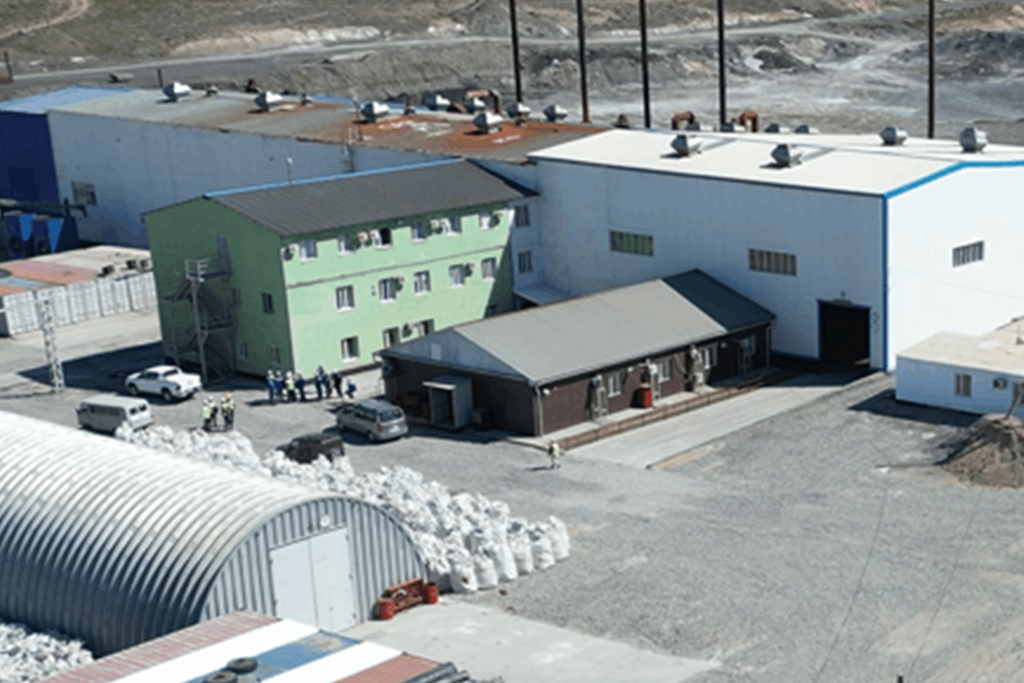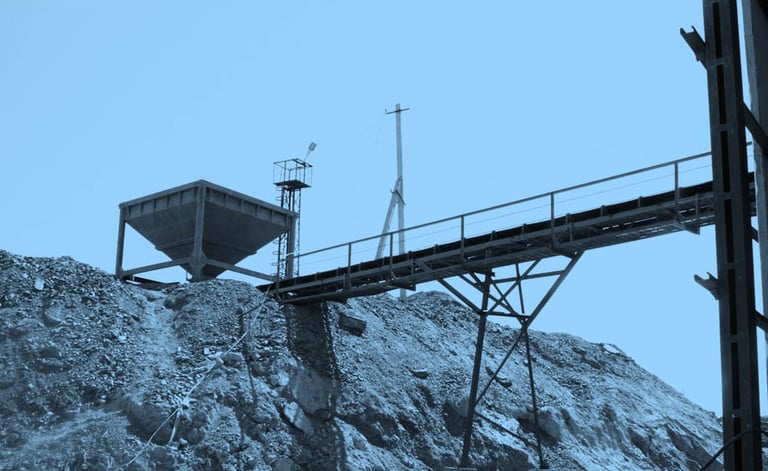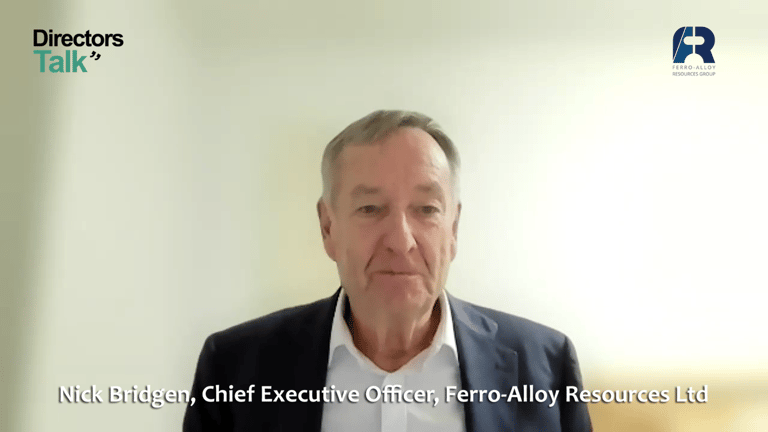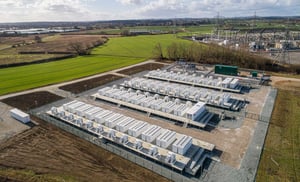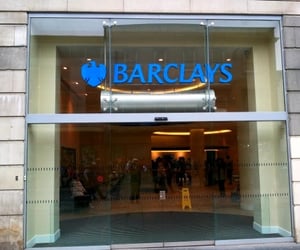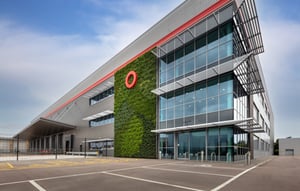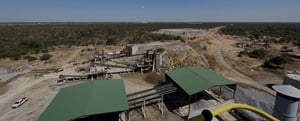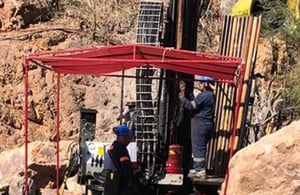Ferro-Alloy Resources Limited (LON:FAR), the vanadium producer and developer of the large Balasausqandiq vanadium deposit in Southern Kazakhstan, has announced its final results for the year ended 31 December 2024.
Operational Highlights
Feasibility study
· The completion of the Phase 1 feasibility study continued to be the main focus of the Company during the financial year and the Company expects the publication of the study during Q2 2025
· Several key areas of the study have been completed during the year, including open pit geotechnical and hydrogeological drilling and water supply hydrogeological drilling
· Tailings management design, a significant part of the study, is expected to conclude imminently
· As announced on 17 December 2024, the Company has entered into a non-binding offtake term sheet with LL-Resources GmbH for sale of the entire production of standard vanadium pentoxide from Phase 1 of the Balasausqandiq Project
Carbon black substitute
· Testing of the carbon black substitute (“CBS”) product has been successfully completed, indicating that rubber made from 90% carbon black plus 10% CBS can perform, for passenger vehicle tyre purposes, as well as rubber with 100% carbon black. Tests by potential customers, using higher levels of substitution, have also been successfully concluded
· Market consultants have advised that a market price of between US$500 and US$600 per tonne of CBS is appropriate, bearing in mind the technical performance of the material compared with currently available substitutes
· Production of CBS from Phase 1 is expected to be over 220,000 tonnes per year, implying revenue potential of over US$110 million per annum
Research and development
The Group has several ongoing research and development initiatives, summarised as:
· Electrolyte for vanadium redox flow batteries: the existing process plant is already capable of producing high purity vanadium pentoxide. The next step is to commission the new equipment at site to produce the mixed oxides required for electrolyte
· Carbon concentrate production for substitution of carbon black in rubber: working with the National Engineering Academy of the Republic of Kazakhstan on the industrial production and usage of carbon-silica fillers in the making of rubber. A pilot plant, substantially funded by government grants, is to be commissioned shortly and will enable greater quantities of samples to be produced for marketing purposes
· Enhanced leaching: awarded grant funding as a private partner to a Satbayev University programme for the development of new metallurgical technologies, particularly focused on enhanced leaching techniques which may be applicable to vanadium-bearing ores
· Ferro-nickel production: applied for funding to research production of ferro-nickel from the nickel-rich residues currently produced from the existing operation
Financial and corporate summary
· Group revenues of US$4.72 million (2023: US$6.16 million), a 23.3% fall on the previous year mainly due to the continued falling market price for vanadium pentoxide, as flagged at the timing of the Group’s 2024 interim results
· Cost of sales increased to US$7.6 million (2023: US$6.8 million) largely driven by an increase in depreciation charges which rose following the installation of a significant item of power transmission equipment which will be used for the main project, as well as increased wages and salaries, leading to a gross loss of US$2.8 million (2023: US$1.1 million)
· As announced on 2 December 2024, save where profitable concentrates can be sourced and treated, the Group’s existing plant has been switched to research and development activities to complete and optimise the ongoing feasibility study. As a result, the Company has recognised a one-off impairment charge at the year-end against plant and equipment of US$0.95 million (2023: nil) which has no cash impact on the business
· Following the success of the Kazakh bond programme launched in 2023, the Company has sold US$18 million of bonds to date leading to an interest charge for the year of US$1.3 million (2023: US$0.27 million)
· The Group made an overall net loss for FY24 of US$9.43 million (2023: loss of US$5.25 million)
· Cash at bank at 31 December 2024 was US$3.78 million (2023:US$1.95 million). Cash at bank at 31 March 2025 was US$1.8 million
Production
Despite the change in focus to research and development, the existing plant itself has operated as expected during FY24 and produced:
· 300.9 tonnes (2023: 310.5 tonnes) of vanadium pentoxide (mainly as ammonium metavanadate)
· 34.9 tonnes (2023: 34.3 tonnes) of molybdenum (in ferro-molybdenum)
On a forward looking basis, process plant operations will be conducted only when suitably profitable raw materials are available.
Commenting on the results, Nick Bridgen, CEO of Ferro-Alloy Resources said:
“Current market conditions for all vanadium producers have been difficult, but the main activity, the feasibility study, has continued as planned and is now nearing completion. The results gathered to date for the study have amply confirmed the outstanding expectations we published in our earlier competent persons report.
Furthermore, the commercial opportunity presented by our CBS product, which was affirmed towards the end of 2024, adds to the anticipated project NPV and gross revenue generation, and will help to enhance our competitive position.
I look forward to advancing these two key revenue streams over the coming year.”
Publication of Annual Report
The Company’s Annual Report will be available shortly on the Company’s website at www.ferro-alloy.com
REVIEW OF THE YEAR
Operational Review
The focus of the Company and its wholly owned group of subsidiary undertakings (“the Group”) has been on the completion of the feasibility study on the Balasausqandiq vanadium deposit, expected before the end of the first half of 2025. The Group is also engaged in the business of extracting vanadium, molybdenum and nickel from purchased concentrates using the pilot-plant that was constructed to test the metallurgical processes to be used in the main Balasausqandiq project.
This operation was intended to provide a cash flow to assist with the substantial ongoing costs of the preparation of the feasibility study and to contribute to the construction costs of the Balasausqandiq project mining operations. However, the scale of the operation, combined with current low metal prices, means that the expected contribution is small and the decision was announced on 2 December 2024 to focus current operations on some important research and development (“R&D”) that will greatly assist future operations and marketing. Notwithstanding the change of priorities, production is continuing and will do so whenever there are high-grade, profitable, concentrates available.
Maintaining the small operation has enabled us to retain the high quality technical and operating team that developed the metallurgical processes to be used in the main Balasausqandiq project so that they are available to assist with the feasibility study, design and future construction and operation. As a result, the Group’s work-force is experienced and will have a high level of technical and operational expertise prior to commissioning of the mine, significantly de-risking the project.
Production
As noted, during December 2024, we announced that the strategic focus of the Company would be on development of the carbon black substitute product and other R&D efforts aimed at improving operations or marketing of the main Balasausqandiq project. Accordingly, we decided that production was no longer a priority and would only continue when other commitments allowed, and when profitable concentrates were available. Nevertheless, during 2024, the plant operated as planned.
During the year, production of vanadium pentoxide (“V2O5“) (mainly as ammonium metavanadate) and molybdenum (in ferro-molybdenum) amounted to 300.9 tonnes (2023: 310.5 tonnes) and 34.9 tonnes (2023: 34.4 tonnes), respectively.
| Quarter | Production of Vanadium pentoxide(tonnes) | Growth vs last year | Production of Molybdenum(tonnes) | Growth vs last year |
| Q1 | 81.6 | +161% | 7.1 | +9% |
| Q2 | 87.6 | -38% | 6.9 | -51% |
| Q3 | 52.3 | +12% | 7.1 | +11% |
| Q4 | 79.4 | -12% | 13.8 | +86% |
| 2024 total | 300.9 | -3% | 34.9 | 2% |
The plant also produced a low-grade nickel concentrate for sale to customers during the year.
Product prices (mid-market, as published) for ferro-molybdenum have broadly remained stable during the year while the price of vanadium pentoxide has reduced by approximately 18%, as shown in the table below:
| Start of 2024 | Average for the year | End of 2024 | Current (25 April 2025) | |
| Vanadium pentoxide (US$/lb) | 6.53 | 5.86 | 5.37 | 5.29 |
| Ferro-molybdenum (US$/kg of Mo) | 48.7 | 50.7 | 49.8 | 48.0 |
Research and Development
Electrolyte for vanadium redox flow batteries
Vanadium Redox Flow Batteries (“VRFBs”) are a means of energy storage particularly suitable for the long-duration storage of energy from intermittent renewable sources. VRFBs have certain advantages over lithium-ion technology, including being scalable, not degrading over time and not catching fire, which make them more suitable for bulk, longer duration, energy storage.
The roll-out of VRFBs is well underway in China and is beginning in the rest of the world. In 2024 some 10% of world vanadium production was used for vanadium battery electrolyte, up from around 2% in 2020. China has announced the commencement of construction of new VRFB projects totalling more than 11 GWh of storage, implying further consumption of around 50,000 tonnes of vanadium, around 38% of 2024 global production.
The Group, therefore, intends to position itself to supply into this growing market by developing the capability to produce the high purity product required, in the form of the specific vanadium oxides that are, ideally, used to make electrolyte.
Using grant funding from Kazakhstan’s National Scientific Council, the Group has already adapted the existing process plant to be capable of producing high purity vanadium pentoxide. The next step is to commission the equipment needed to produce the mixed oxides (V2O4 and V2O3) required for electrolyte. Concurrently, we have installed equipment, including a test VRFB, at the laboratory of our research partner, the Physical Technical Institute in Almaty, to test our materials, electrolyte and performance within an operating VRFB.
After a period of testing and development, the plan is to continue to move most of our current production to these higher value products. Offtake discussions for mixed oxides have already been held with three major VRFB manufacturing companies. By developing the expertise and the market, the aim is to position the Group to be able to supply mixed oxides at scale into this potentially very large market when the main Balasausqandiq project is commissioned.
Production of carbon concentrate for the substitution of carbon black in the making of rubber
The Group has previously announced the successful technical and marketing studies, using specialist consultants, for the production of a concentrate from the carbon in the tailings at the planned major processing plant at Balasausqandiq. The ongoing R&D work is designed to further enhance our knowledge of the production process and to develop markets.
The Group is working with the National Engineering Academy of the Republic of Kazakhstan on a technological project covering the industrial production and usage of carbon-silica fillers in the making of rubber. The aim of the project is to construct a pilot plant, substantially funded by government grants, on the Group’s existing processing site to concentrate the Group’s carbon tailings to provide over ten tonnes of fine-ground carbon-silica concentrate per month for testing and marketing. All equipment is now in place, requiring only cabling before commissioning can start. The Group is well advanced in understanding the requirements of this market and, using consultants, has already tested the production and performance of the carbon black substitute material in the manufacture of rubber.
Enhanced leaching research
The Group has been awarded grant funding as a private partner to a Satbayev University programme for the development of new metallurgical technologies, particularly focused on enhanced leaching techniques which may be applicable to vanadium-bearing ores. From these funds, the Group has set up a full lab-scale comminution circuit at the Satbayev University site in Almaty.
Production of ferro-nickel from low grade nickel concentrates
The Company has applied for funding to research production of ferro-nickel from the low grade nickel residues currently produced from the existing operation.
Feasibility Study Review
The Company has been carrying out a feasibility study into the first phase (“Phase 1”) of the Balasausqandiq project, due to be completed towards the end of the first half of this year.
In September 2024 we announced the increase in the proposed Phase 1 annual throughput of ore at the Balasausqandiq deposit from 1.1m tonnes to 1.65m tonnes, reflecting the substantial increase in the estimated resource at Ore-Body 1 (“OB1”), as well as increasing forecasts of world vanadium demand. Phase 1 production is now expected to be some 8,000 tonnes per year of vanadium pentoxide.
Balasausqandiq deposit
The Balasausqandiq deposit is exceptional in a number of ways. Primarily, it is not comprised of titano-vanadiferous magnetite, as most of the world’s vanadium deposits are. It is a sedimentary deposit which, for the following reasons, is expected to have significantly lower capital and operating costs in comparison with other vanadium producers, placing the Group at the very bottom of the curve of cash costs of production:
· The ore is amenable to a whole-ore pressure acid leach process which gives a higher metallurgical recovery than conventional extraction from magnetite;
· Pre-concentration of the ore and high temperature roasting are not required;
· There are valuable co- and by- products within the ore, principally carbon, which can be easily recovered without significant additional processing;
· Major infrastructure items of power, road and rail connections already exist on site or nearby; and
· The Balasausqandiq deposit is a very large deposit and is easily mined from an open pit. Phases 1 and 2 combined envisage production of over 10% of 2024 world supply.
Exploration
OB1
There are six known ore-bodies in the deposit and there is some evidence of a seventh. Of these, only OB1 has now been explored sufficiently to declare a resource under the Australasian Code for Reporting of Exploration Results, Mineral Resources and Ore Reserves published by the Joint Ore Reserves Committee (“JORC”).
A revised mineral resource estimate was issued by the Company’s consultants SRK Consulting (Kazakhstan) Limited (“SRK”) in April 2023 and included the following highlights:
· An Indicated Mineral Resource of 32.9 million tonnes for OB1, at a mean grade of 0.62% V2O5, reported at a marginal cut-off grade of 0.4% V2O5 – equating to 203,364 contained tonnes of V2O5
· An increase of 8.6 million tonnes (35.4%) of mineral resource and an increase of 38,058 tonnes (23%) of contained V2O5 by comparison with the estimate contained in the Company’s 2018 Competent Persons Report
· The results of the previously reported infill drilling and trenching programmes completed during 2021/22 have been successful in converting 100% of the Resources to Indicated for the OB1 deposit. No Measured or Inferred Resource are stated
· A total of 75 diamond core holes and 88 trenches were used to define the Resource (a reduction of drill section spacing to 250 metres from the original 500 metres increased confidence)
· Confirmation that there are reasonable prospects for eventual economic extraction by constraining the Mineral Resources to an optimised open pit shell (50 degree slopes and a revenue factor of 1) using a selling price for 98% V2O5 flake of US$9.82 /lb
Summary Report for April 2023 MRE OB 1 Resource
| Classification | Zone | Tonnage (Mt) | % V2O5 | % Mo | % U | % C |
| Indicated | OxideTransitionalFresh (Sulphide) | 1.57 | 0.67 | 0.014 | 0.0047 | 7.16 |
| 1.25 | 0.66 | 0.014 | 0.0045 | 7.17 | ||
| 30.08 | 0.61 | 0.015 | 0.0052 | 8.83 | ||
| Total | 32.90 | 0.62 | 0.015 | 0.0051 | 8.69 |
OB2, 3 and 4
The drilling of OB2, 3 and 4 was completed during 2022/23. X-ray fluorescence (“XRF”) grade measurements, together with full assays for some 5% of the samples as checks, is expected to enable an inferred resource estimate to be prepared to JORC standards. Due to unfavourable topography, some 25% of the planned exploration area proved difficult and expensive to access and as a result was not drilled (albeit the Company does not expect the area to create difficulties for actual mining).
The mineral resource estimate for OB2,3 and 4 will exclude the area of difficult topography, but, based on the XRF analysis carried out on cores by the Company (and not yet verified by the 5% full assay checks), the amount drilled is expected to provide ample ore to provide a relatively long life for the Phase 2 development.
Open pit geotechnical drilling
The open pit geotechnical study has been completed and the results will be used to confirm the open pit slope design for the mine planning study.
Open pit hydrogeological drilling
Open pit hydrogeological drilling has been completed and the hydrogeological study will be concluded as a part of the mine planning study.
Water supply hydrogeological drilling
A water bore drilling investigation for the project water supply has been completed and the results have been used to design the borefield and water pipeline required to pump the water to the proposed process plant.
Tailings management
The tailings management design is in progress and is expected to conclude during April 2025, managed by SRK.
Processing
Metallurgy
Extraction of vanadium during acid leaching, following initial pilot and subsequent feasibility study testing has concluded achieving between 94-97% vanadium extraction into solution.
Metallurgical testing including ore characterisation, grinding, engineering tests, solid liquid separation tests, impurity removal, tailings product assessment and vanadium recovery to a saleable product has concluded at SGS Canada Inc (“SGS”) managed by Tetra Tech Limited (“Tetra Tech”). The results of this testing program are being used by Tetra Tech to design the processing plant and supporting services as part of the feasibility study.
Carbon black substitute (“CBS”)
Test work on the extraction of a carbon concentrate from the vanadium bearing ore and on its subsequent use as a substitute for carbon black has been completed.
Flotation tests show that the necessary >40% concentrate can be made with good overall carbon recovery. Testing of the product for use in making rubber by substitution for carbon black has been successfully completed and rubber made from 90% carbon black plus 10% CBS has been shown to perform, for passenger vehicle tyre purposes, as well as with 100% carbon black. Higher substitution levels are expected to yield satisfactory performance in other rubber products.
By comparing the performance of CBS with other available reinforcing fillers, including carbon black, market consultants have advised that a market price of between US$500 and US$600 per tonne is appropriate for CBS.
Production of CBS from Phase 1 is expected to be over 220,000 tonnes per year, implying anticipated revenues of over US$110 million per annum.
Conclusion
Ferro-Alloy Resources expects the publication of the Phase 1 feasibility study in H1 2025 to significantly raise awareness of the emergence of this new addition to the global vanadium market at the time of growing investor appreciation for rising vanadium use in both the construction and green energy sectors. The work on CBS has proven that this product can be produced and sold at prices that make it a genuine co-product, bringing down the already low cash costs attributable to the vanadium product to unprecedentedly low levels.
Discussions with various potential investors and debt funders have already been initiated but the publication of the feasibility study is expected to trigger the advancement of these discussions.

